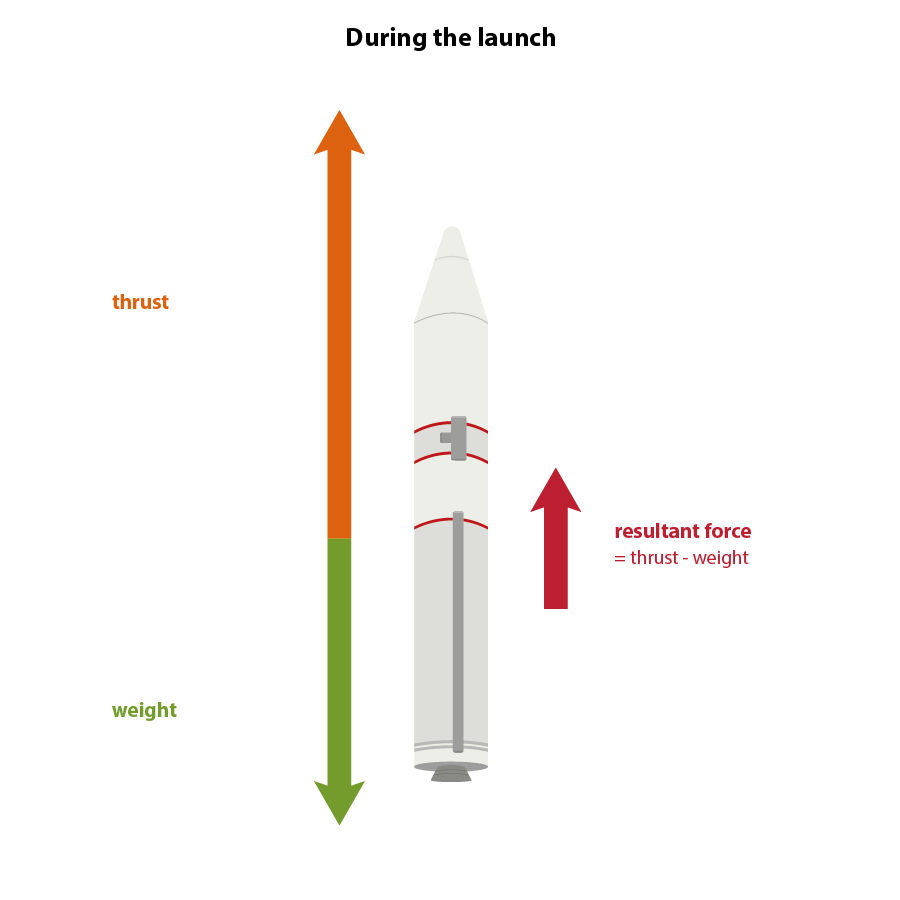Everything on the surface of the Earth is pulled down towards its centre.

Questions
The force of gravity gives the rocket (and everything else on earth!) its weight. If there is no force of gravity, an object is said to be 'weightless' but still has mass (ie. the material it is made of). A rocket must produce a very strong 'thrust' force to act against its weight so that it can push (propel) itself off the ground at 'lift off'.
Try working out the answers to the following questions before clicking on the 'Show Answer' buttons – how many did you get right?
These two forces (thrust and weight) act in opposite directions, one upwards (thrust), and the other downwards, towards the Earth (weight). This means that they act against each other. The actual force which lifts the rocket off the ground is called the 'resultant' force - this is the difference between the forces of weight and thrust. You can find the value of this by subtracting the rocket's weight from its thrust, as shown in the simple formula below:

Try working out the answers to the following questions before clicking on the 'Show Answer' buttons – how many did you get right?